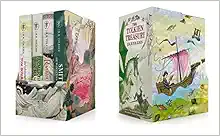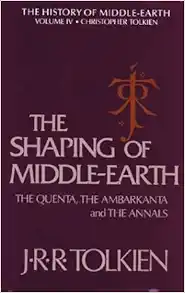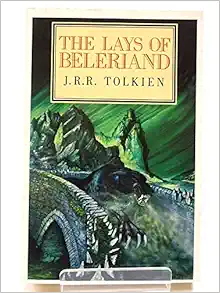Description
`The Lay of Aotrou and Itroun is a poem in the tradition of the medieval "lay", also illustrated by the Lay of the Children of Hurin, and in the Lay of Leithian. This 556-verse-long poem tells the tragic story of a lord who sacrifices his life by love: in order to have a child with his wife, then to remain faithful to his spouse, he gives his life to a witch.' The J.R.R. Tolkien Estate website`The language is as time-worn as a Runic engraving yet clear as a bell ... The holy and the unholy imbue everything. It is a world captured in stained glass.' Daily Telegraph --This text refers to an alternate kindle_edition edition. J.R.R. TOLKIENxa0(1892–1973) is the creator of Middle-earth and author of such classic and extraordinary works of fiction as The Hobbit, The Lord of the Rings , and The Silmarillion . His books have been translated into more than fifty languages and have sold many millions of copies worldwide. --This text refers to an alternate kindle_edition edition.
Features & Highlights
- Unavailable for more than seventy years, this early but important work is published for the first time with Tolkien’s "Corrigan" poems and other supporting material, including a prefatory note by Christopher Tolkien.
- Set ‘In Britain’s land beyond the seas’ during the Age of Chivalry,
- The Lay of Aotrou and Itroun
- tells of a childless Breton Lord and Lady (the ‘Aotrou’ and ‘Itroun’ of the title) and the tragedy that befalls them when Aotrou seeks to remedy their situation with the aid of a magic potion obtained from a corrigan, or malevolent fairy. When the potion succeeds and Itroun bears twins, the corrigan returns seeking her fee, and Aotrou is forced to choose between betraying his marriage and losing his life.
- Coming from the darker side of J.R.R. Tolkien’s imagination,
- The Lay of Aotrou and Itroun
- , together with the two shorter ‘Corrigan’ poems (which lead up to it and are also included in this volume), were the outcome of a comparatively short but intense period in Tolkien's life when he was deeply engaged with Celtic, and particularly Breton, myth and legend.
- Originally written in 1930 and long out of print, this early but seminal work is an important addition to the non-Middle-earth portion of his canon and should be set alongside
- The Legend of Sigurd and Gudrún
- ,
- The Fall of Arthur
- and
- The Story of Kullervo
- . Like these works, it belongs to a small but important corpus of his ventures into ‘real-world’ mythologies, each of which in its own way would be a formative influence on his own legendarium. Edited with notes and commentary by Verlyn Flieger and a prefatory note on the text by Christopher Tolkien.





